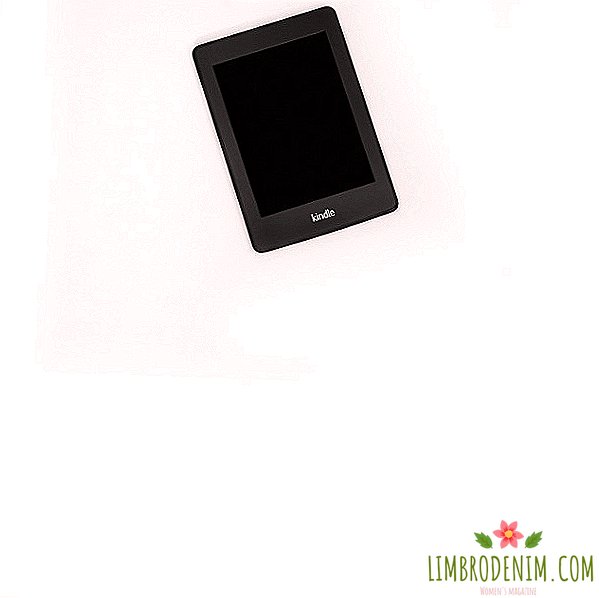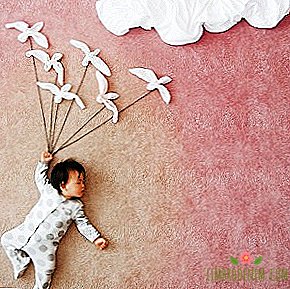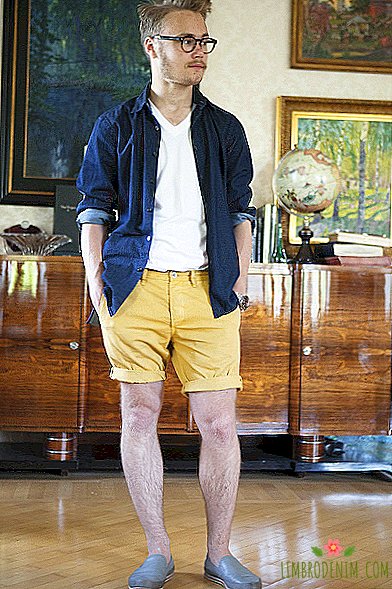5 Russian brands that do not share clothing and art
Over the past few years in Russia appeared many local brands that produce clothing for life: basic, sporty, elegant, very different. However, in the pursuit of commercial success, young designers often lose their creative component, so that as a result, all the works look suspiciously similar. We chose young artists, for whom design remains a field for experimentation, contrary to the emerging trend of universality.
Factive face
The founder of the brand, Lusine Avetisyan, studied at the St. Petersburg Art Academy named after Stieglitz, where she experimented a lot - although the teachers were not interested in her creative throwing. But unusual collections - with a complex cut, corsets, numerous draperies, an abundance of handmade frills, rhinestones and flowers - said Frank Sozzani - this is how Avetisyan received the title Best Project in the Vogue Italia Talents competition. Having worked as a stylist for several years, the designer completely rethought the approach to work - this was also helped by participation in the Milan trade show Pitty Super. There she met Maria Ter-Margaryan, who advised Lusine not to play with the design, but to work on prints so that the originality of the author's drawing was visible in the clothes.
“The wave of art implementation in all areas of design has gone,” says Lusine, “starting with sweatshirts with prints and reproductions and ending with the cooperation of large fashion houses with artists. It's cool that art is now fashionable: art can be transferred to any surface “An object available for purchase and operation. Of course, I’m misleading if I say that the commercial side doesn’t bother me - nevertheless, the expression of creative vision is paramount. I want to believe that commerce goes hand in hand with creativity and doesn’t bother ive it. " Now the Factive Face collections paired with February First (the next ones on this list) are presented in the Find a Name showroom in Paris.
February First
The sisters Daria and Anastasia Zhilyaev graduated from the Florence school Polimoda and now live and work between Florence, Rotterdam and their native St. Petersburg. The name of the brand refers to the birthday of the founders: they both came into being on the first of February, but with a difference of five years. February First clothes tell some mystical story: hypertrophied volumes, intricate embroideries, unusual materials like vegan skin made from mushrooms. Girls admit that their aesthetics have the strongest response from customers in the UK and Asia. It is noteworthy that the girls collaborate with third-party artists. For example, with Liza Smirnova, who worked on a series of prints for February First things.
“It seems to me that if you decide to do complicated things, do not back down,” Daria argues. “For example, my teacher from Polimoda, Andrea Kammarozano, likes to work with crazy design, and his agent constantly persuades to do things for sale easier, collection. Well, then a couple of weeks before the Paris showroom, horrified by the fact that he betrayed himself, creates a very complex, completely unadapted for life sweater, and, of course, buyers choose it. And they order a lot at once.
We are also faced with this. For the Briofit collection, we have done many simple things, and they all sadly hang unsold here, and the gray jacket with a hole in the back and huge sleeves, about which our designer said: “Dasha, I don’t know what it is,” bestseller, we still sew it to order. My experience shows that in order for an art-design project to be commercially successful, in no case should we try to please everyone. Those guys who love unusual things, very loyal customers, they will provide you with good revenue. But do not offend them by adding basic jeans to the collection. This is not exactly forgiven. "
Evgenia Barkova
Eugenia is a certified linguist. She considers her first education to be an important life lesson: “A five-year error helped me to understand two things: first, you need to hear yourself; second, let it be anything, not a routine. I think these two principles I subconsciously follow in all - including design ". Barkov is now completing his undergraduate studies at the British Higher School of Design. A designer’s rather romantic view of things: it’s not so important whether a design idea transforms into a utilitarian object or remains a beautiful concept - the main thing is that it gives emotion to a potential buyer.
The girl admits that she does not understand why avant-garde and art are often contrasted to commercial success: “The very essence of modern fashion is a constant movement forward, the industry is based on it. And if you are not surprised from season to season, farewell. In my opinion Most of the fashion shows in today's fashion weeks are avant-garde: Raf Simons, JWAnderson, Proenza Schouler, and the same Prada are super successful commercial designers who, as far as I know, draw inspiration from modern art. artistic value with works K Unsa or Quinn. And the current Gucci? ... Although, of course, not everything is unambiguous. My favorite, incredibly talented Meadham Kirchhoff and Thomas Tait dropped out of the race. LVMH giant. Still it didn't work out, although things were innovative. "
Eugene believes that if the idea is cool, from it, in any case, you can make a wearable collection: “The idea is always primary. For me, this approach is now in priority - to do what you love before the insanity, and not to compromise. I do not think how to make your project commercial. Let it be an irresponsible and punk approach, but I see much more prospects in it than in thoughts of monetization. I want to finish my graduation collection as good as I can. After I continue to experiment, surprise and inspire, do something Thu o like, a lot and hard. speak".
Natalya Timofeeva
Last year, Rostovka Natalya Timofeeva, becoming the winner of the "New Names in Design" competition, showed a collection at Mercedes-Benz Fashion Week Russia, and today she continues to work away from the capital. Her approach to design is captivating: in Timofeeva's works, calm silhouettes coexist with grotesque styling, vintage decor with elements of bright plastic, and sweeping hand prints with painstaking embroideries.
Natalia graduated from art school and architectural academy with a specialty “artist-stylist”: “I always liked to surprise people and work with complex materials uncharacteristic for creating clothes. Once I decided to revive an old grandma's dress and sewed a huge flower from a broken umbrella. , this is how it all started. I still do not understand what it is connected with, but I always want to add something “from myself”.
It’s very difficult to strike a balance between creativity and commerce! But I am grateful to my clients for choosing things that were created for creative shooting. They are bought by self-confident women who are not afraid to express themselves; Now I started working with men. Every year I create about four capsule collections plus a lot of third-party projects and, of course, individual orders. If you find yourself in something and do it with love, then there are no barriers and restrictions. "
Masha Lamzina
Masha Lamzina lives in Vladivostok, but the works of the artist, whether paintings or clothes, fly around the world. Lamzina's style is light and recognizable - plain graphic prints on a bright or dark background, often provocative and paradoxical. The drawings are done manually using a simple stencil and chlorine bleach, however, in order to complete the work, sometimes a lot of trial and error is needed. Masha studied graphic designer, from childhood was fond of fashion and the creation of avant-garde clothing. As a result, she went to the final of the ITS contest in Italy and received an invitation for an internship in the fashion house John Galliano - so Lamzina quit her job as a graphic designer and went into fashion professionally.
Masha says that she spends a huge amount of time and effort on working with prints, textiles and textures: “It’s what attracted me from the very beginning - the creation of something that is very fashionable at the same time and never goes out of fashion; unique things in which there will always be aesthetic value, even ten, twenty, or fifty years later.I like to adapt my ideas for small collections (in particular, Lamzina collaborated with the Vladivostok brand of basic clothing "More". - Ed.) available to a large number of people, but I still consider the main work to be projects in which there are art prints, a lot of manual labor, experimental cuts and avant-garde silhouettes.
Everything has its own consumer, most of what I do is sold out immediately after the presentations. Nevertheless, I am always looking for a balance between what I have achieved and the possibility of development, entering new markets. It’s very interesting to be between art and design, I like to occupy this particular niche. The main thing is to be able to tell your story and convey ideas to those to whom they will be interesting. "





